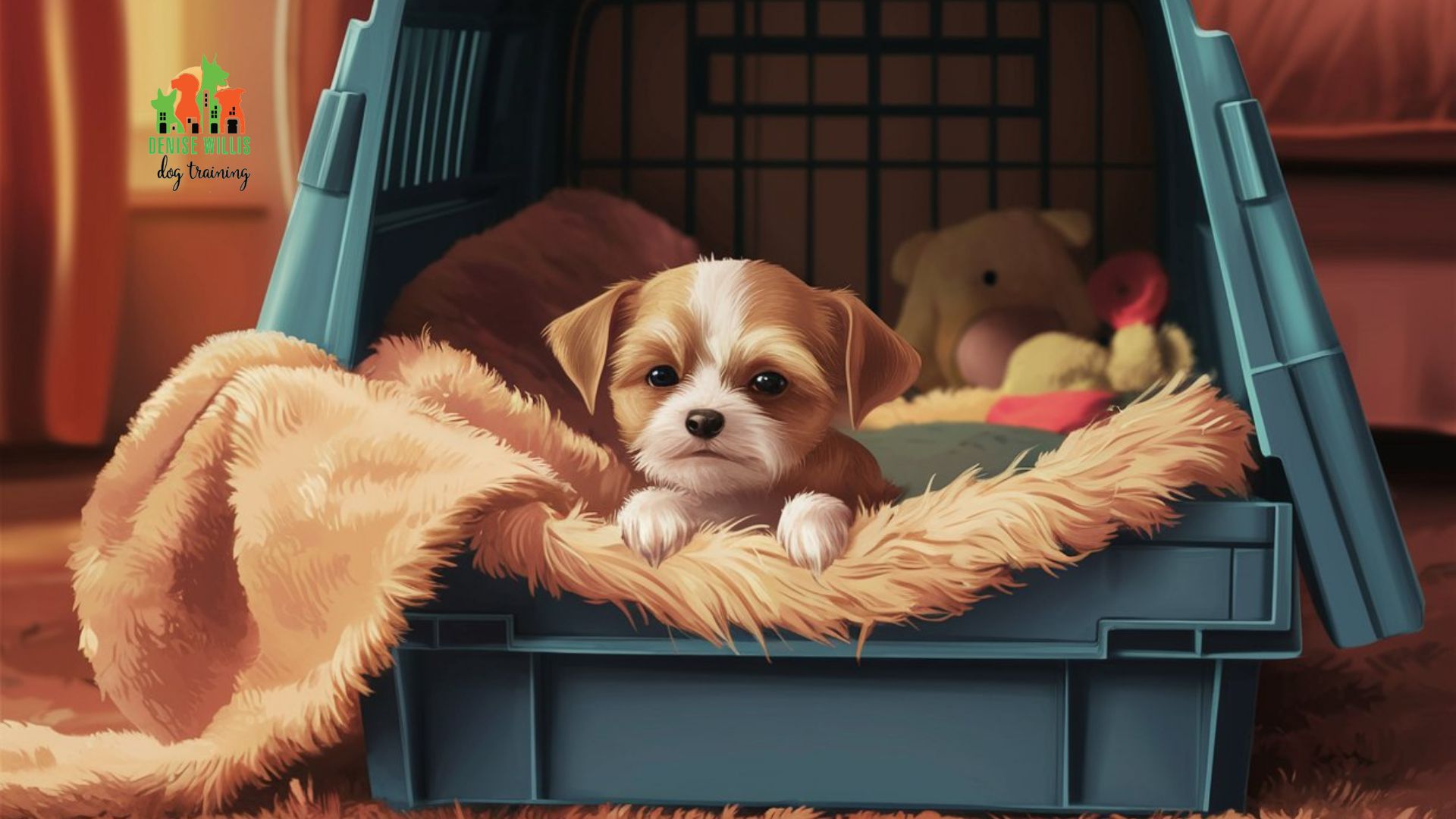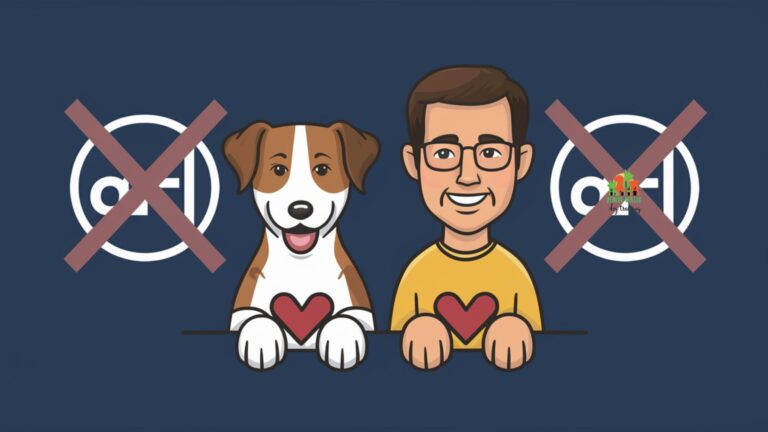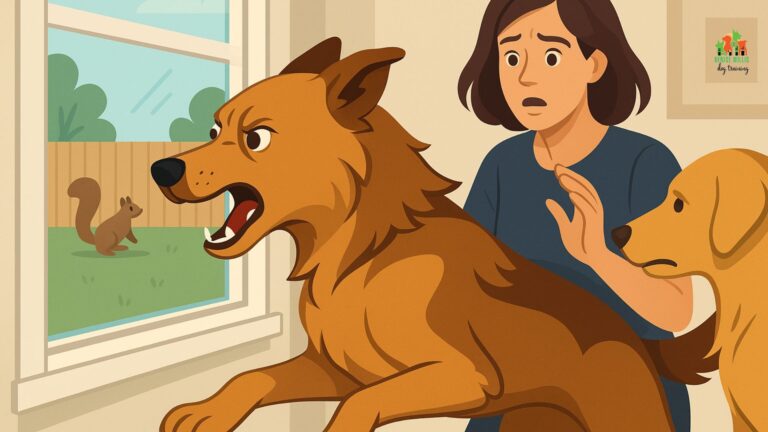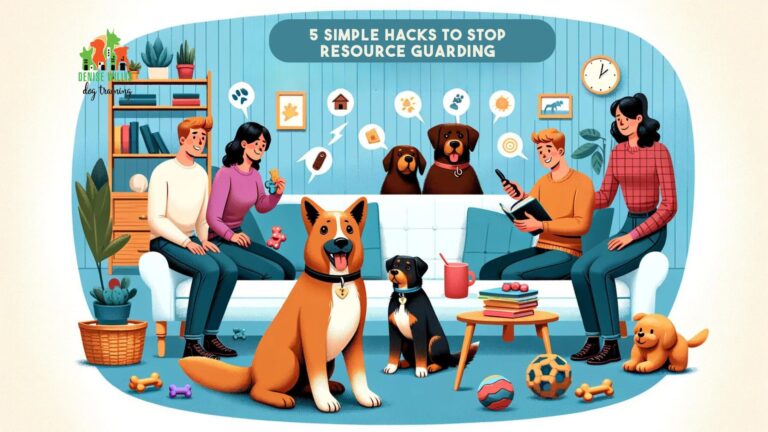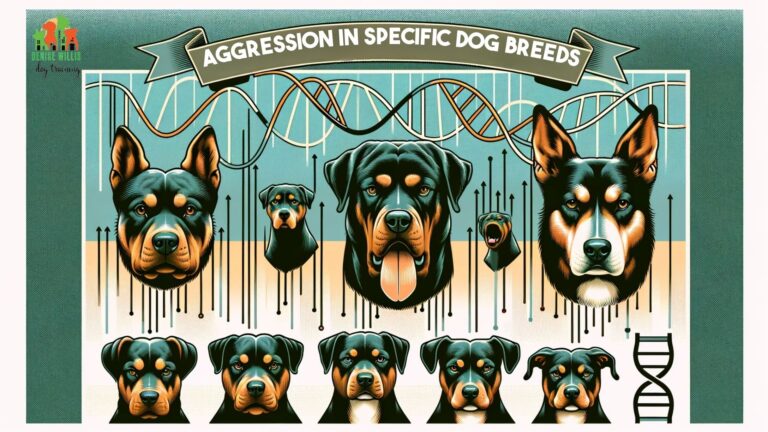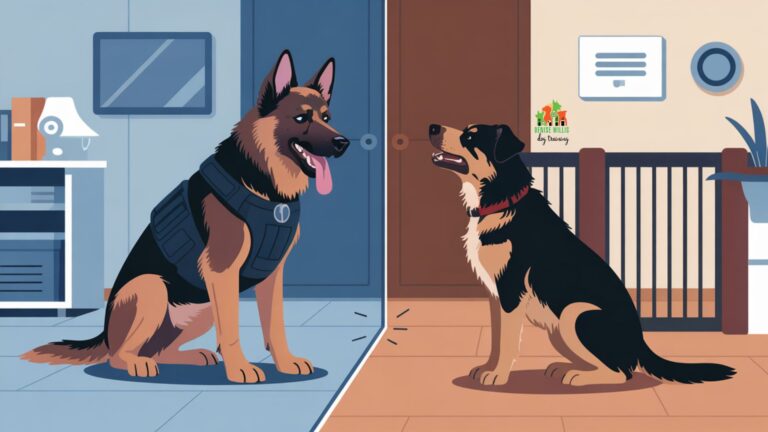The Shy Dog’s Guide to Conquering Fear: 10 Simple Techniques
📍 Service Area Notice: DW Dog Training provides in-person training services exclusively in the Greater Baltimore area. While our blog content is designed to help dog owners internationally, our hands-on training services are locally focused. For readers outside our service area, we hope you find value in our articles and welcome you to reach out with questions!
Dealing with fearful dog behavior? You’re not alone. Many dog owners struggle with anxious pets, but there are effective ways to help. Imagine your dog feeling confident and secure instead of cowering or trembling. By understanding the causes of your dog’s fear and applying practical techniques, you can transform their life and yours.
Ready to see your dog overcome their fears? Let’s get started.
Understanding Fearful Dog Behavior
First, let’s dive into understanding why your dog might be displaying fearful behavior. Common causes include noise sensitivity, fear of new situations or surfaces, and even fear of other animals or people. Knowing the root of your dog’s anxiety is the first step toward addressing it.
According to research, the probability of correctly identifying fearful behavior in dogs increases with experience. For instance, professional dog experts correctly identify such behavior over 70% of the time, compared to just 30% for people with no dog experience. Experienced individuals also use a broader range of physical cues from the dog—such as eyes, ears, mouth, legs, and tail—to interpret their emotional state.
Here are some key facts and statistics about fearful dog behavior:
- The ability to identify happy behavior in dogs doesn’t vary much by experience level, ranging from 90-93% across all groups.
- More experienced individuals reported using a greater number of the dog’s physical features (eyes, ears, mouth, legs, tail) to interpret the emotional state, especially the ears. Non-professionals were less likely to report the ears and eyes as emotionally informative compared to professionals.
- Smaller dog breeds tend to exhibit more non-social fearfulness compared to larger breeds.
- First-time dog owners are more likely to have fearfully behaving dogs compared to experienced owners.
- Urban dog owners may experience more issues with fearful behavior in their dogs due to increased environmental stressors compared to rural owners.
- Fearfulness in dogs tends to increase with age until around 10 years old.
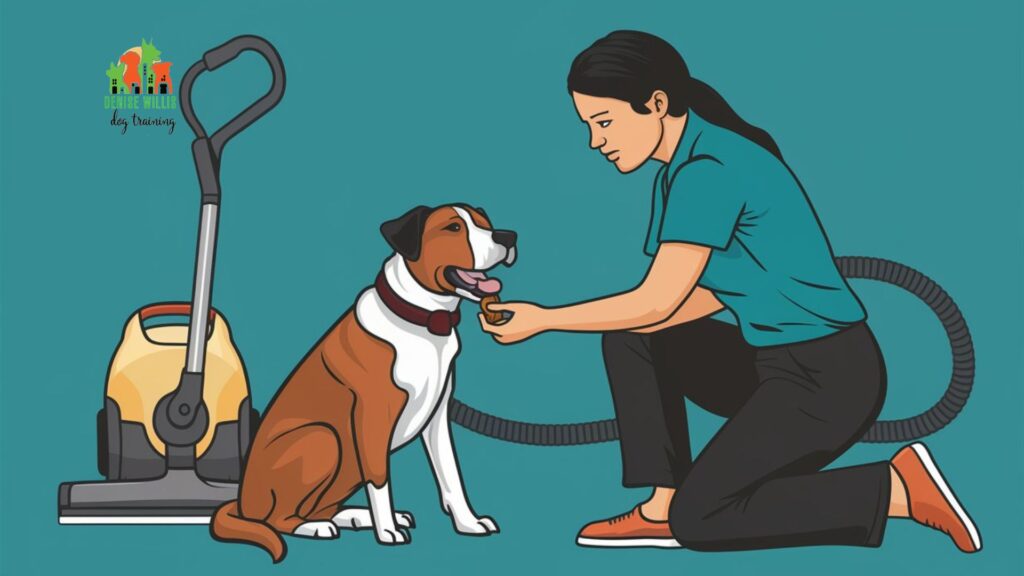
10 Simple Techniques to Help Your Fearful Dog
1. Create a Safe Space
Ensure your dog has a designated safe area where they can retreat when feeling scared. This could be a cozy crate, a quiet room, or a specific corner of your home. A safe space can provide a sense of security and comfort for your dog. It should be filled with familiar items such as their favorite toys, blankets, and perhaps an item of your clothing for your scent.
2. Gradual Exposure
Slowly introduce your dog to the source of their fear. For example, if your dog is scared of the vacuum cleaner, start by having it turned off and just sitting in the room. Gradually increase exposure by turning it on for short periods. The key here is patience. This process, known as desensitization, allows your dog to become accustomed to the fear-inducing object or situation without being overwhelmed.
3. Positive Reinforcement
Reward your dog with treats and praise when they exhibit calm behavior in the presence of their fear trigger. This helps build a positive association. For instance, if your dog is afraid of strangers, reward them every time they stay calm around new people. Over time, they’ll start associating strangers with positive outcomes.
4. Consistent Routine
Dogs thrive on routine. Regular feeding, walking, and playtimes can help reduce anxiety by providing a predictable environment. Consistency in daily activities can give your dog a sense of stability and control, which is particularly important for anxious dogs.
5. Desensitization and Counter-Conditioning
This involves exposing your dog to their fear in a controlled way and pairing it with something positive. For example, if your dog is afraid of fireworks, play recordings of fireworks at a low volume while giving treats. Gradually increase the volume over time as your dog becomes more comfortable. This method helps change your dog’s emotional response to the trigger from negative to positive.
6. Use of Calming Products
Consider using products designed to calm dogs, such as pheromone diffusers, calming collars, or anxiety wraps. These products can help reduce anxiety by mimicking the natural calming pheromones produced by dogs or providing gentle pressure that can have a soothing effect.
7. Professional Training and Behavior Modification
Sometimes, working with a professional trainer or behaviorist is the best course of action. They can provide tailored strategies to address your dog’s specific fears. A professional can also help you understand the underlying causes of your dog’s anxiety and develop a comprehensive treatment plan.
8. Adequate Exercise and Mental Stimulation
Physical activity and mental challenges can help reduce anxiety by providing an outlet for your dog’s energy and focus. Regular exercise can help lower stress levels and improve your dog’s overall well-being. Additionally, providing mental stimulation through puzzle toys or training exercises can keep your dog engaged and less focused on their fears.
9. Avoid Reinforcing Fearful Behavior
While it’s natural to want to comfort your dog when they’re scared, excessive coddling can reinforce fearful behavior. Instead, try to remain calm and act as if everything is normal. By maintaining a composed demeanor, you signal to your dog that there’s no reason to be afraid.
10. Consult Your Veterinarian
In some cases, medication might be necessary to help manage your dog’s anxiety. Your vet can provide guidance on the best options for your pet. Medications can be used as a short-term solution to help your dog cope while you work on behavior modification strategies.
Addressing Specific Fearful Behaviors
Different dogs have different triggers. Understanding these can help you better tailor your approach. Here are some common scenarios and tips on how to handle them:
- Fear of Loud Noises: Gradual desensitization and creating a noise-proof safe space can be effective. Consider using white noise machines or playing calming music to help mask the sounds that scare your dog.
- Fear of Strangers: Introduce new people slowly and use treats to create positive associations. Encourage visitors to remain calm and allow your dog to approach them at their own pace.
- Separation Anxiety: Practice leaving your dog alone for short periods and gradually increase the duration. Providing a special treat or toy that they only get when you’re gone can help them associate your departure with something positive.
Personal Experience
As a professional dog trainer, I’ve worked with many dogs exhibiting fearful behavior. One memorable case involved a small terrier mix named Max, who was terrified of car rides. Through gradual exposure and positive reinforcement, we were able to help Max not only tolerate car rides but eventually enjoy them.
Max’s fear of car rides was so severe that he would start trembling and drooling the moment he saw the car. We began by simply sitting in the car with the engine off, rewarding Max for staying calm. Over several weeks, we gradually increased the level of exposure: starting the engine, taking short trips around the block, and eventually longer drives. By pairing each step with high-value treats and lots of praise, Max learned that car rides were not something to fear. Today, Max eagerly jumps into the car, ready for new adventures.
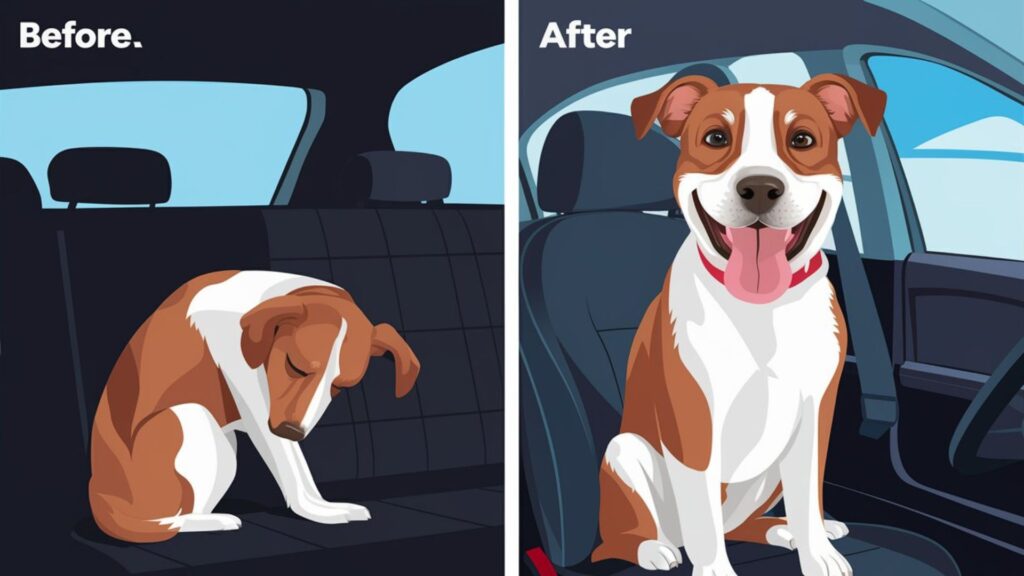
Useful Resources To Help You Further
For further reading, consider my articles which provide additional insights into issues related to fearful dog behavior:
- Dog Aggression in Older Dogs: Compassionate Approaches to Caring for Your Senior Canine
- Dog Aggression After Surgery: Professional Insights into Post-Operative Behavioral Shifts
- Dog Aggression Vs. Playfulness: A Comprehensive Guide for Responsible Owners
- Dog Aggression in Specific Breeds: The Compelling Science Behind Canine Temperament
- Dog Aggression Toward Children: Understanding the Root Causes and Effective Solutions
- Dog Aggression Solutions: A Complete Guide to Stopping Aggressive Behavior in Dogs
- Causes of Dog Aggression: A Revealing Exploration into the Heartfelt Struggles of Our Furry Friends
- Signs of Aggression in Dogs: How to Identify and Respond to Them for a Harmonious Home
The Science Behind Fearful Dog Behavior
Research has shown that smaller dog breeds tend to exhibit more non-social fearfulness compared to larger breeds. This might be due to their more delicate nature and the fact that they are often more coddled and protected by their owners. Understanding this can help you approach your small dog’s fears with a bit more empathy and patience.
First-time dog owners are also more likely to have fearfully behaving dogs compared to experienced owners. This is likely because experienced owners are more adept at socializing and training their dogs from a young age. If you’re a first-time owner, don’t be discouraged. With time and experience, you’ll become more confident in handling your dog’s fears.
Urban dog owners may experience more issues with fearful behavior in their dogs due to increased environmental stressors compared to rural owners. The constant noise, crowds, and chaotic environment of urban settings can be overwhelming for some dogs. If you live in a city, try to find quiet, less crowded areas for walks and outdoor activities.
Building a Strong Bond with Your Dog
One of the most important aspects of helping your fearful dog is building a strong bond based on trust and security. Spend quality time with your dog, engage in activities they enjoy, and be patient and understanding of their fears. Your calm and consistent presence can provide the reassurance they need to overcome their anxieties.
Training sessions should be fun and positive experiences. Use these times not just to teach commands but to strengthen your bond. Reward-based training methods are particularly effective for fearful dogs as they promote trust and cooperation.
The Importance of Early Socialization
Early socialization is crucial in preventing and addressing fearful behavior. Exposing your puppy to a variety of people, places, and situations in a positive manner can help them grow into a well-adjusted adult dog. If you have a fearful adult dog, socialization is still important but should be approached more gradually and with extra care.
Puppy socialization classes can be a great way to introduce your young dog to new experiences in a controlled environment. For adult dogs, consider joining a basic obedience class or a dog playgroup to provide positive social experiences.
The Role of Diet and Nutrition
Believe it or not, your dog’s diet can also impact their behavior. A balanced diet that meets all their nutritional needs can contribute to overall well-being, including mental health. Some studies suggest that diets rich in certain nutrients, such as omega-3 fatty acids, can help reduce anxiety in dogs.
Consult your veterinarian about the best diet for your dog, and consider incorporating supplements if necessary. Avoid feeding your dog food that is high in artificial additives and fillers, as these can sometimes exacerbate anxiety.
Recognizing and Responding to Your Dog’s Cues
Learning to read your dog’s body language is essential in managing fearful behavior. Recognize the signs of fear, such as cowering, trembling, hiding, excessive panting, or growling. Understanding these cues allows you to intervene before the fear escalates.
Respond to your dog’s fear by providing calm and reassuring support. Avoid forcing them into situations they’re not ready for, as this can worsen their anxiety. Instead, give them space and time to adjust at their own pace.
Managing Your Own Stress
Dogs are highly attuned to their owner’s emotions. If you’re stressed or anxious, your dog can pick up on this and become more fearful. Managing your own stress levels is important for your dog’s well-being.
Practice relaxation techniques such as deep breathing, mindfulness, or yoga. Spending time with your dog can also be a great way to reduce your own stress. Engage in activities you both enjoy, such as long walks, playing fetch, or simply relaxing together.
The Power of Positive Reinforcement
Positive reinforcement is one of the most effective tools in managing fearful behavior. Reward your dog for displaying calm and confident behavior with treats, praise, or play. This helps reinforce the desired behavior and builds their confidence over time.
Avoid using punishment or harsh methods, as these can increase fear and anxiety. Focus on creating a positive and supportive environment where your dog feels safe to explore and learn.
Seeking Professional Help
If your dog’s fearfulness is severe or doesn’t improve with these techniques, it may be time to seek professional help. A certified dog trainer or behaviorist can provide specialized support and develop a tailored plan for your dog’s needs.
Your veterinarian can also be a valuable resource. In some cases, underlying medical conditions can contribute to anxiety. A thorough check-up can rule out any health issues and help determine the best course of action.
Final Thoughts
Helping a fearful dog requires patience, understanding, and consistent effort. By using these techniques, you can make significant strides in improving your dog’s confidence and quality of life. Remember, every dog is unique, and what works for one may not work for another. Stay persistent and compassionate, and consider seeking professional help if needed.
If you’re struggling with your dog’s fearful behavior and need personalized assistance, don’t hesitate to contact DW Dog Training. Our experienced trainers are here to help you and your furry friend lead a happier, more confident life together.
Key Takeaways
- Understand the Causes: Identify what triggers your dog’s fear to address it effectively.
- Create a Safe Space: Ensure your dog has a designated safe area to retreat when feeling scared.
- Gradual Exposure: Slowly introduce your dog to the source of their fear with patience.
- Positive Reinforcement: Reward calm behavior to build positive associations.
- Consistent Routine: Maintain regular feeding, walking, and playtimes for stability.
- Professional Help: Seek guidance from trainers or veterinarians if needed.
- Diet and Nutrition: Ensure your dog’s diet supports their overall well-being.
- Read Your Dog’s Cues: Recognize and respond to signs of fear appropriately.
- Manage Your Own Stress: Keep your stress levels in check to avoid transferring anxiety to your dog.
- Bonding: Spend quality time and engage in activities that strengthen your bond.
Frequently Asked Questions About Fearful Dogs
Q: How do I know if my dog is fearful? A: Signs of fear include cowering, trembling, hiding, excessive panting, growling, and avoiding certain situations or people. Learning to read your dog’s body language is crucial.
Q: Can a dog’s diet affect their anxiety levels? A: Yes, a balanced diet rich in nutrients such as omega-3 fatty acids can help reduce anxiety. Avoid foods high in artificial additives and fillers.
Q: What is the best way to introduce my dog to new experiences? A: Gradual exposure and positive reinforcement are key. Start with controlled environments and slowly increase the level of exposure while rewarding calm behavior.
Q: Should I comfort my dog when they are scared? A: While it’s natural to want to comfort your dog, excessive coddling can reinforce fearful behavior. Instead, remain calm and act as if everything is normal.
Q: When should I seek professional help for my dog’s fearfulness? A: If your dog’s fear is severe or doesn’t improve with basic techniques, consult a certified trainer or behaviorist. Your veterinarian can also provide valuable insights and rule out any medical conditions.
Q: How can I help my dog during loud events like fireworks? A: Create a safe, quiet space for your dog and use calming products like pheromone diffusers. Gradual desensitization to the sounds can also help over time.
Q: Can first-time dog owners handle a fearful dog? A: Yes, but it may require more patience and learning. Consider seeking help from experienced trainers or joining a training class to gain confidence and skills.
By incorporating these techniques and seeking professional help when needed, you can help your fearful dog lead a happier, more confident life. For personalized assistance, don’t hesitate to contact DW Dog Training. We’re here to support you and your furry friend every step of the way.

